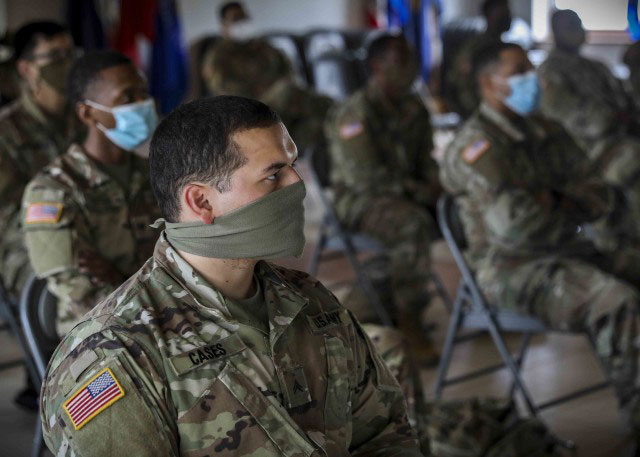Collaboration Key as Military Suicide Prevention Research Strategy Takes Shape

Military suicide is both a pressing and delicate topic. Alongside the many recent efforts undertaken by the U.S. Army Medical Research and Development Command (USAMRDC) to both understand and treat issues surrounding psychological health, the newly-released DOD Suicide Prevention Research Strategy (DOD SPRS) now makes its case as a key tool for achieving future success in those areas.
"These are the big rocks that we need to ensure we are addressing," says Katharine Nassauer, a portfolio manager at the USAMRDC's Military Operational Medicine Research Program (MOMRP), of the research strategy. Billed as a tool for identifying funding and investment strategies specific to the study of military suicide, the DOD SPRS was released in September and developed at MOMRP alongside stakeholders from the U.S. Department of Defense (DOD), the National Institutes of Health (NIH), and U.S. Department of Veterans Affairs (VA). Says Nassauer of the strategy, "It's much broader than just looking at statistics and numbers."
Regardless of scope, Nassauer hopes the DOD SPRS will serve as a key cog in the enduring effort to prevent what the DOD itself calls the "critical" issue of U.S. military suicide. The strategy was developed at the direct request of the Office of the Assistant Secretary of Defense for Health Affairs (OASD(HA)) and the Defense Health Agency (DHA).
"It important that we do all we can, within and across the Services, to chart a clear and coherent course for suicide reductions in our ranks," says Cmdr. Christopher Steele, MOMRP director. "Research and development can support novel, integrated approaches and build better partnerships for these directions."
According to the DOD's second Annual Suicide Report (ASR) – released in early October – more than 490 Service Members died by suicide in the year 2019. That number – which, according to the ASR, is statistically comparable to the number of military suicide deaths just two years prior in 2017 – is still "not going in the right direction," according to the DOD. Overall since 2014, suicide rates for active duty Soldiers have increased, while remaining statistically consistent for both Reserve and National Guard groups over the same time period.
"Collaborations are key to preventing suicide," says Dr. Karin Orvis, director of the Defense Suicide Prevention Office (DSPO), in an announcement regarding the release of the ASR. "We must continue to collaborate on research, data sharing, outreach, and other key efforts. We still have a long road ahead of us, but we will not relent in our efforts."
The DOD SPRS document dovetails with the effort to identify those same key research and outreach efforts. The staff at MOMRP was charged with developing the strategy due to their status as a key strategic integrator of psychological health research within the DOD.
"This is a document that lays out for the DOD what our research strategy is going to be for delivering evidence-based solutions to mitigate the suicide problem in the military," says Nassauer. "This is sort of an overarching, 50 thousand-foot view strategy."
In short, the DOD SPRS lays out both short-term and long-term goals for DOD-supported research by aligning to the six specific questions – questions previously identified by the National Action Alliance for Suicide Prevention (NAASP) Prioritized Research Agenda for Suicide Prevention. The questions include, for example, "Why do people become suicidal?" and "What new and existing research infrastructure is needed to reduce suicidal behavior?" Each question has its own set of research objectives, of course – which include everything from the identification of external factors contributing to mental well-being to the development of methods to chart potential suicide risk – with the ultimate goal being to address military-specific concerns across the continuum of mental health.
"Some of the research that we've been funding over the past decade gets to some of these questions," says Nassauer, "but there are still some significant gaps."
It's likely that collaboration will be a key driver in closing those gaps. To that end, Nassauer is quick to point out the DOD SPRS aligns with both the larger DOD and nationwide civilian suicide prevention strategies; an important example of synergy given, according to DSPO, military suicide rates are comparable with the overall U.S. adult population.
For the DOD at-large, the finish line for this effort remains – sadly, and for now at least – a point on the horizon line. But for the team at MOMRP, the hope is that their collective effort – the compiled DOD SPRS – will be a step that leads to tangible, real-world results.
Says Steele, "The hope is that this document helps solidify integrated approaches to improving conditions, and we plan to follow up with research funding to support new research efforts in this space."
Access the DOD Suicide Prevention Research Strategy (DOD SPRS) here.
Access the DOD second Annual Suicide Report (ASR) here.














